– Kellie –
We have arrived in Zambia! This took us about 2,5 hours and some (expected) struggles at the border, but I’ll come to that in the next blog. But first let me tell you what we did after we left Sander at Tuli Block. The morning of our departure we said our goodbyes to this amazing area by a wild goose hunt, or rather chasing the many tracks the wild dogs had left behind, trying to make some sense of it! We didn’t, but it was a good morning hike. After, we left for Palapye. Here we had decided to stock up, buy a proper torch and fill up our gas tank. As anything in Africa, this didn’t go as easily as you might think. We drove from one place to another, all telling us they didn’t have the right equipment to fill up the gas tank. Then, and by now we’re at that point saying ‘lucky for us’, we found one who had! In the end, we decided to stay in Palapye instead of driving to the next town, which we originally planned. This was nice, because we stayed at Camp Itumela, a place where Anouk and I had stayed three years before and where we had a lot of fun.

Our camping spot in the middle of the wilderness with no one near us for at least 30 km's.
Central Kalahari
The next day we went off to Central Kalahari, a long drive, but we arrived at the entrance town (read: tiny village) before sundown. That night we slept at a camp near the entrance (with near, I mean a two-hour drive on a so-called “main off-road”). We woke up two hours later because a huge storm hit us and we felt like we would be lifted off and taken to the land of Oz! We got out and packed our tent in the pouring rain at a speed you can’t imagine! But of course, as soon as we were done and warming ourselves in the car… yeah you guessed it right, the storm had blown over… Ah well, back to bed for a few hours, and the next morning an early wake for our trip to the Central Kalahari. The result of the storm was written all over the road, it was very muddy and thus a perfect moment to try our 4WD (without getting stuck). Down in the Central Kalahari this was even worse. Here we found out that putting the gear in 4WD, didn’t mean it goes straight in 4WD. Found that out the hard way, after we got stuck! But by backing up and hitting the gas full-on, we went through anyway. Without 4WD, because that turned on after we went through!
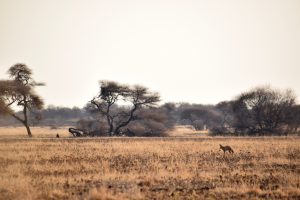
An open plain at sunset, the perfect hunting zone for a lonely bat-eared fox.
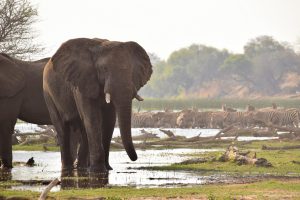
Elephant in the Makgadikgadi National Park with in the background zebra's drinking.
Makgadikgadi National Park
Our next stop took us right through Makgadikgadi National Park. We drove to the other side of the park on a very sandy trail right along the river. It was beautiful! At one point, we stopped and saw a lioness, with in the background elephants and zebra’s heading to the river for an afternoon drink. And we heard, more than saw the hippos at the hippo pool.
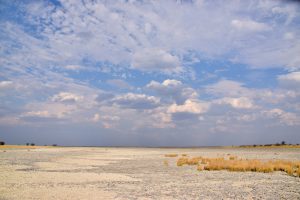
Many many years ago we would have been standing under water. Now it is a beautiful stretched Salt Pan.
Nxai Pans – aka the Elephant photoshoot!
That night we stayed at Planet Baobab, a very good place for overlanding. It was surrounded by several huge, impressive baobabs. The next morning, we visited the Nxai Pans, an hour drive from where we were staying. As usual we woke up around 5.30 am so we could get there in time before the sun became too hot for the animals (and us) to move. It started as a rather disappointing day, the roads were crappy (which can be expected, but it still sucks), and surrounded by bush. We arrived at the pan and it was pretty, but seemed deserted. Even at the waterhole we only saw a few springbokkies… Was that why we rushed so much that morning?! We decided to drive some more, with in the back of our mind that fuel was running short. But this detour was supposed to be only 2 km’s according to the map. After the first sign, we couldn’t find more so we trusted the little map. But apparently this map wasn’t very accurate! And we drove about 16 km before we came back to our starting point. By that time, it was getting really hot, we had scratched the car because the road we had to take was very small, and we were worried our fuel couldn’t get us all the way back to the camp. We were definitely ready to go back and call it a day. But before we did we stopped one last time at the waterhole. And thank God we did! First, we saw a small herd of zebra and wildebeest approaching for a drink, so we waited. Then, in the simmering distance, we saw two elephants coming! Believe it or not, but it only became better after that! First the two elephants were joined by two Secretary birds of which one fell down in the water, really funny! And after the first few elephants, a whole herd approached! And they were so excited to get to the water, first running and then splashing around getting themselves all muddy. Fourteen elephants and a mudpool, it was the best photoshoot I’ve seen. We stayed there during the heat of the day and then went to see the Baines Baobab.
Baines Baobab
Lars
The Baobabs are our favourite trees in southern Africa and there are lots of legends about their appearance, especially the fat stem and root-like branches. Here is one: There was a time, long long ago, when the first baobab started to grow next to a small lake. She grew slow, like baobabs do, and it took her many years to turn into adulthood. Eventually, though, the tree was tall enough to have a good look at some other trees. Some were very tall and slender, others had brightly coloured flowers or had large leaf’s. Then one day the baobab could see her reflection in the lake which shocked her to her root hairs: for the first time she could see her huge big fat trunk covered in bark that looked like the wrinkled hide of an old elephant. In addition, she only had small, tiny leaf’s and creamy, white flowers. So uninspired!
The baobab, of course, was upset and complained to the God of Evolution. “Why did you make me this huge and fat? Why not slender, with big and juicy fruits?” On and on the baobab went, wailing about the lack of curves until… The God of Evolution had enough of it. Determined to silence the tree forever, the Creator yanked the baobab out of the ground and replanted it upside down. From that day on the baobab could no longer see its reflection or complain and remained the most iconic of African trees, with its roots sticking into the sky.
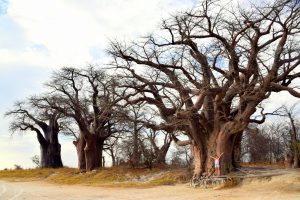
Me positioned in front of one of the many huge and magnificent baobab trees in this area. We can't even imagine how old they are!
The elephants and baobabs had made our day and relieved we returned to Planet Baobab. The next morning, we took the road again. We were almost out of petrol though and in order to get to the next big town, Nata, we needed to find a petrol station or else we would probably not make it. There was one close to Planet Baobab, but it was without petrol. Hmm… What now? Apparently, this happens quite often as many locals stock on petrol for situations like this and sell it with a profit; I headed into the closest town and bought enough petrol to make it to Nata, and from there all the way to Kazungula where we would enter Zambia. Read more about this adventure in our next blog.
Did you like reading this blog? Or do you have any questions or comments, please don’t be shy to give a comment in the section below.
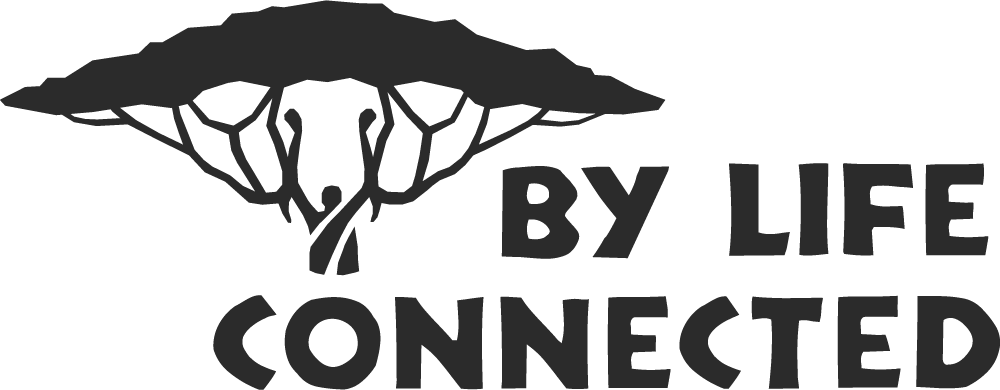

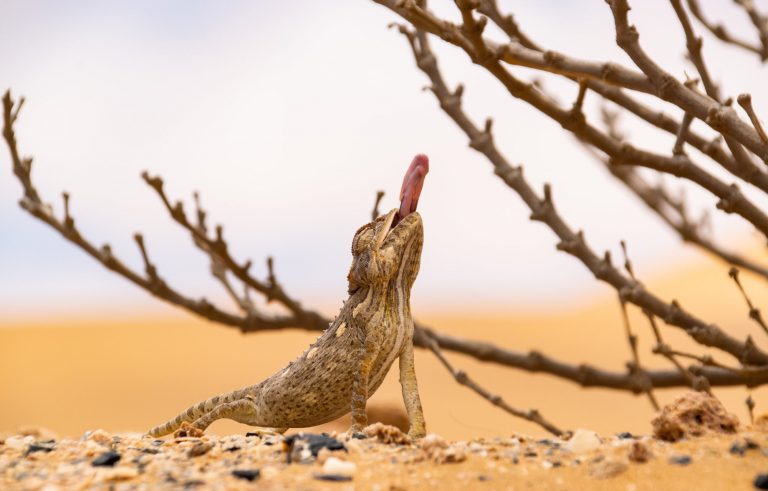


Dat zijn echt prijswinnende foto’s!